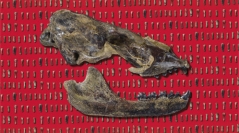

 Geodiversitas
46 (3) - Pages 31-100
Geodiversitas
46 (3) - Pages 31-100In the present study, we present a new monachine phocid, Magophoca brevirostris n. gen., n. sp., the fifth monachine described from the Pisco Formation (Peru). Coming from the Cerro la Bruja level at the locality of the same name, Magophoca n. gen. is the geologically oldest known seal from the Neogene of the southeast Pacific, dated at least to the late Tortonian, c. 8.4 Ma. Magophoca n. gen. is the second Monachinae (with Noriphoca gaudini) found to possess six upper incisors instead of four as in the other members of the sub-family. Further characters, such as the deep fossa for the m. triceps brachii caput mediale below the humeral head, on the posterior aspect of the proximal extremity of the diaphysis of the humerus, strongly support close relationships with Piscophoca from the latest Miocene and earliest Pliocene of the Pisco Formation at Sud Sacaco (Peru), but more interestingly, with Frisiphoca aberrata from the Tortonian of Belgium. In addition, the presence of an entepicondylar foramen is shared between Frisiphoca and Magophoca n. gen., but rare among other Monachinae, further strengthening the link between both. Although the fossil record of Frisiphoca aberrata is too incomplete to draw conclusions, these marked similarities allow us to hypothesize a dispersal link between both regions, across the late Miocene North Atlantic and Central American Seaway. The phylogenetic analysis retrieved Magophoca n. gen. as closely related to Hadrokirus and Piscophoca from younger levels in the Pisco Formation. This phylogenetic analysis also returned Kawas from the Miocene of Argentina as a sister genus of Homiphoca from the Pliocene of South Africa, thus radically departing from the previous classification of Kawas as a phocine seal.
Lobodontini, Monachinae, Phocidae, Pisco Formation, Peru, Cerro la Bruja, Tortonian, new genus, new species